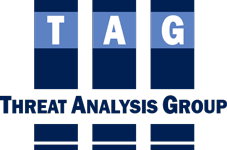I have always been a believer in interviewing people intimate with a facility during a security assessment. People that work at the facility have a better understanding of the security problems than I do when I first walk into a new facility.
Recently, I’ve had some unique opportunities to conduct “fact-finding” missions for a couple of clients. Rather than working from a formal list of questions, the interviews were less structured and more conversational. This has proven to be a valuable method for getting to the facts.
For one of the clients, the goal of the “interviews” was to determine what the real security problems are at their facilities so a security program could be designed. For the other client, the goal was to determine how best to reduce security costs. In both cases, the conversational, unstructured interview elicited significantly more facts that were expected and likely more than would have come to light in a formal interview.
While the facts were more plentiful and the depth of understanding greater using this method, the downside is the time it takes to elicit the information. Each interview can take anywhere from 30 minutes to two hours. In structured interviews of comparable interviewees, it usually takes 25 – 50% of that time. For clients and consultants alike, time is money. Understandably, some clients don’t see the value of this approach as it takes their employees away from work for a longer period of time and ultimately they pay for both the employees time and the consultants time. Worse yet is the consultant who doesn’t dedicate the necessary time to gather the facts.
Having been exposed to the values of this method, I am now a true believer. Here are some basic guidelines for conducting this type of interview:
1. Do NOT prepare questions in advance – if you know what information you need, you’ll get there without a written list of questions
2. Let the discussion evolve rather than forcing it
3. Build rapport early – find something common with the other person before hammering out questions
4. If possible, try not to take notes, type on a laptop, or use tape recorders
5. Validate the interview – once you finish the interview, type the interview notes and send them to the interviewee to verify the facts and make changes as necessary
6. Take your time
Try this method once and let me know how it works out for you.

